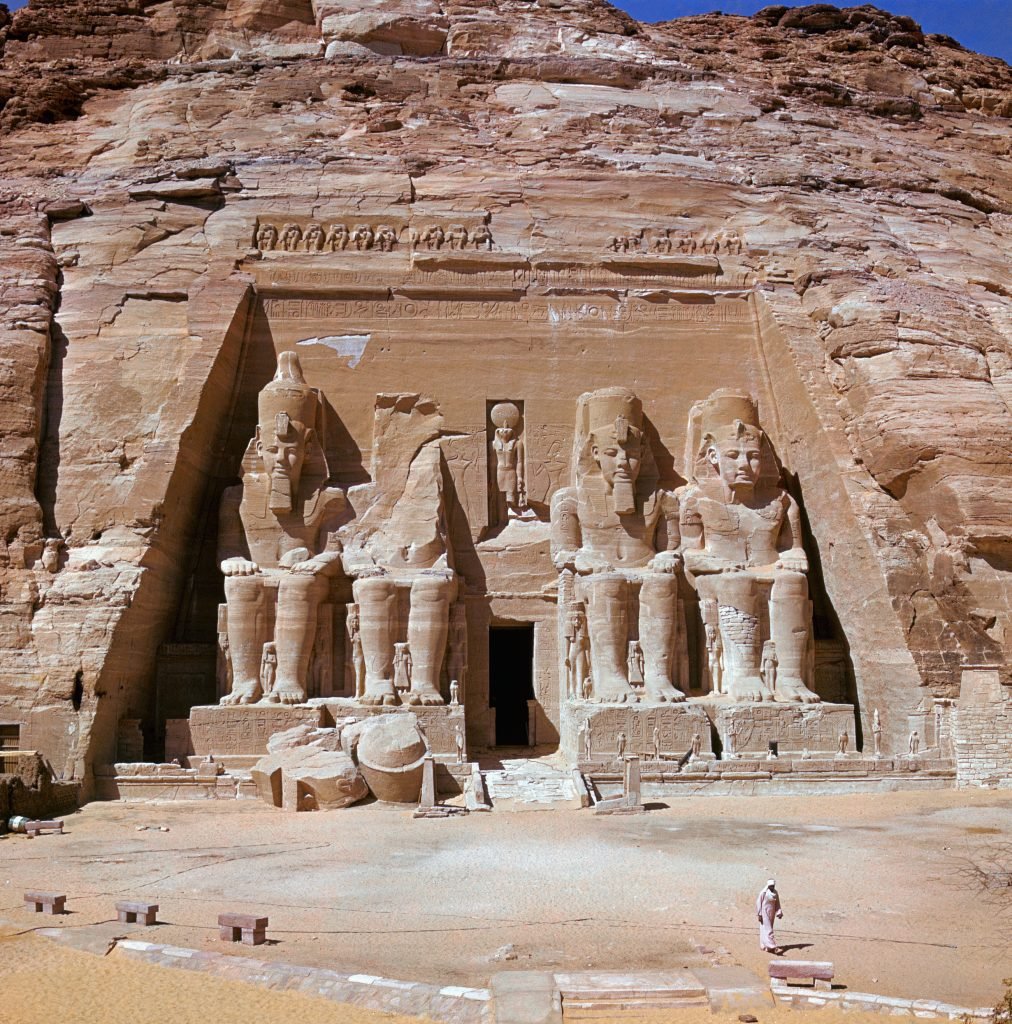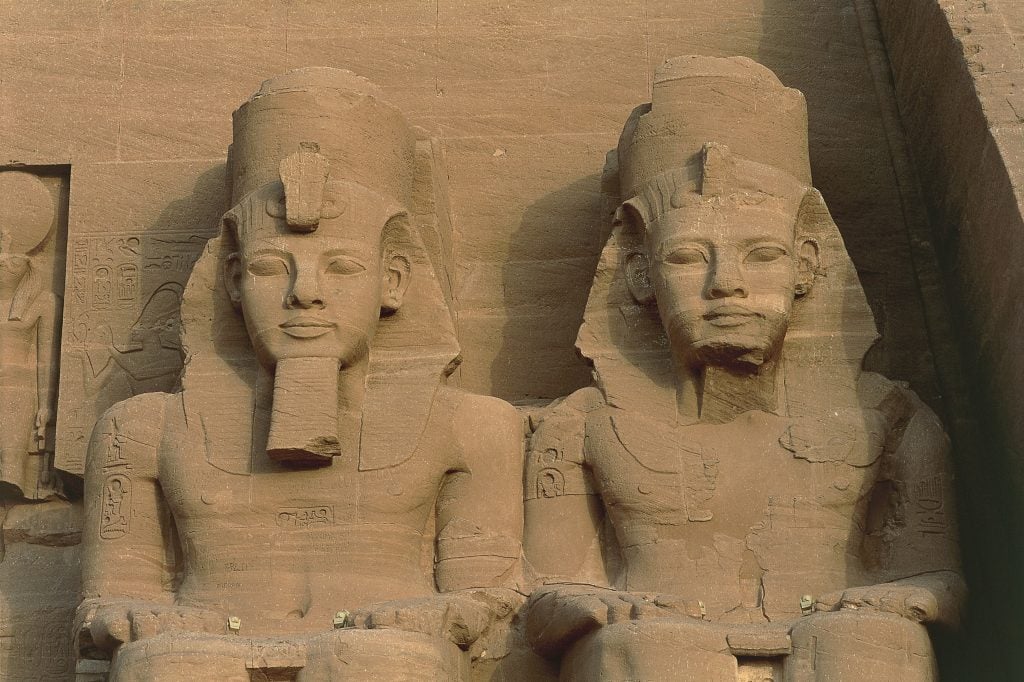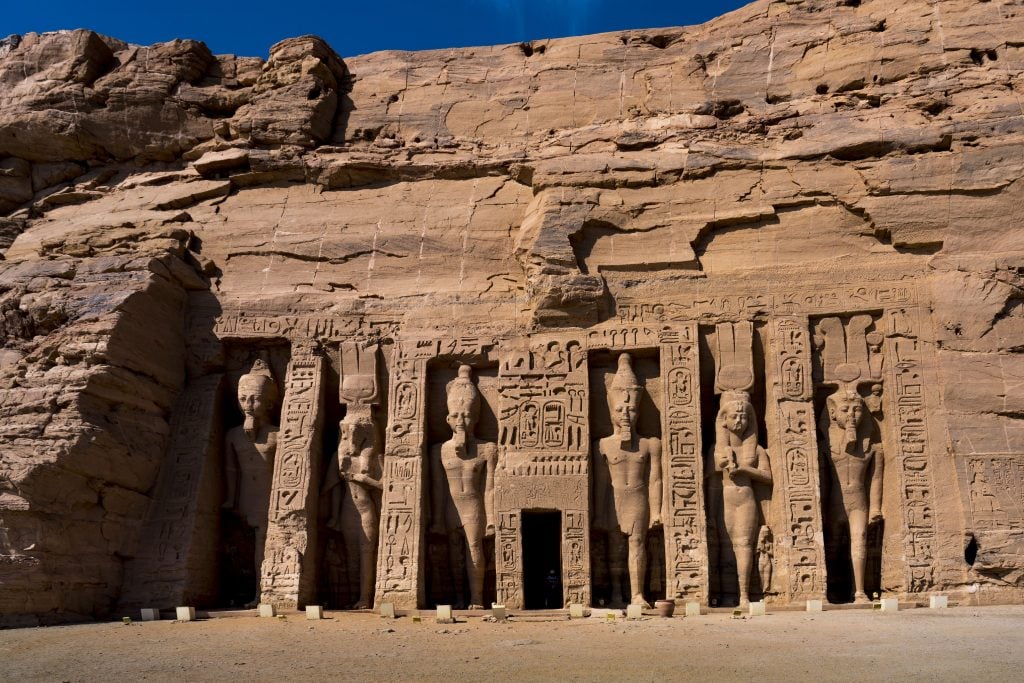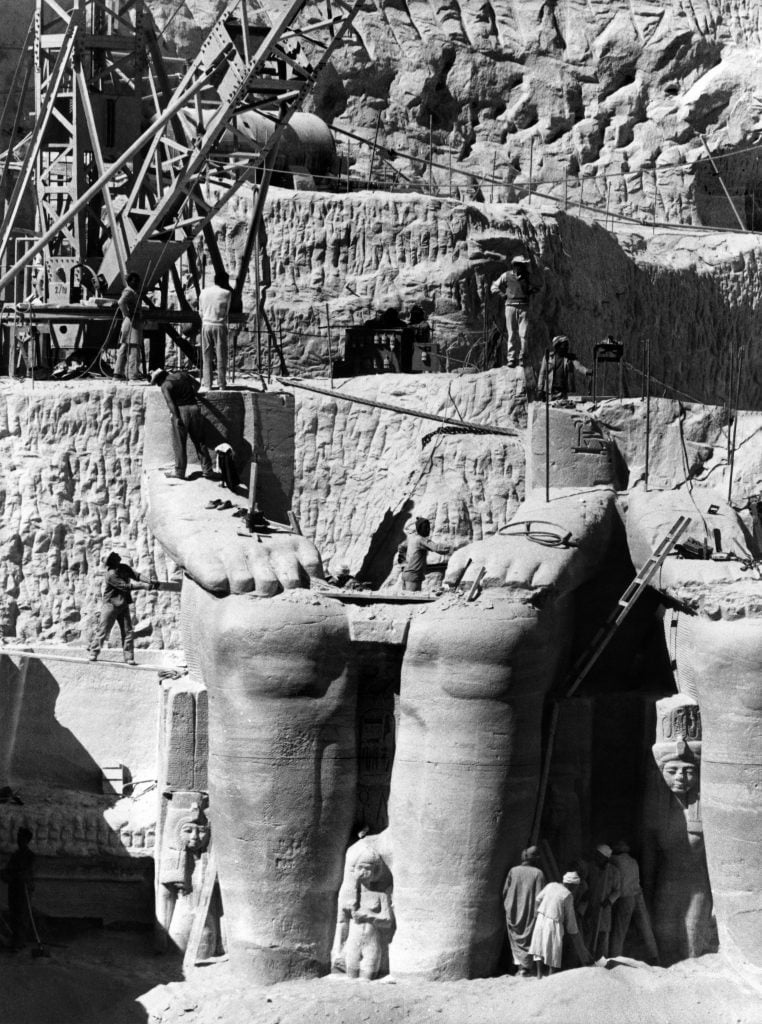Archaeology & History
Huge! The Colossal Temples Built for Ancient Egypt’s God-King
The monuments to Ramses II have weathered centuries—and a major relocation.

The monuments to Ramses II have weathered centuries—and a major relocation.

Adnan Qiblawi

Ramses II is celebrated as the most powerful king of the New Kingdom, an era at the pinnacle of ancient Egyptian society. Known as Ramses the Great, he is remembered both as Egypt’s mightiest warrior pharaoh, with an undefeated streak of military campaigns, and as its most prolific builder. The early part of his reign was marked by the construction of grand cities, monuments, and temples, but none are so magnificent, nor so massive, as the temples of Abu Simbel.
The twin temples of Abu Simbel were originally carved out of the mountainside in the deserts of Nubia, Upper Egypt, in the 13th century B.C.E. Nubia, which borders contemporary Sudan, was an area with an incredible wealth of natural resources such as gold and carnelian. This made Nubia inextricable to Egypt’s success, and so Ramses decided to mark his territory with monolithic monuments designed to both impress and Egyptianize the Nubians.

The Colossal statues of the Temple of Ramses II in Abu Simbel, Egypt. Photo: DEA / A. Garozzo / De Agostini via Getty Images.
The pharaoh took his role as god-king seriously. Construction of the temple complex to commemorate his divinity began around 1260 B.C.E. and took 20 years to complete; it encompassed the Great Temple and the Small Temple. The former rests on a site at the west bank of the Nile River, stands at 98 feet high and 115 feet long with four colossi flanking the entrance, a pair at each side. These guardian colossi depict Ramses II seated on a throne adorned with the double crown of Upper and Lower Egypt. At their giant feet are smaller statues representing the king’s wives, children, and various protecting gods. Above the central doorway, there is a niche figure of Ra, the falcon-headed god of the sun. Crowning the façade of the Great Temple is a frieze depicting 22 baboons.
The Small Temple was built to honor the pharaoh’s chief consort, Queen Nefertari. It was dedicated primarily to the goddess Hathor, often associated with music, dance, love, and joy. At about 40 feet high and 98 feet long, the Small Temple stood aptly named in comparison to its twin.

The Small Temple in Abu Simbel, Egypt. Photo: Visions of America/Universal Images Group via Getty Images.
The desert eventually concealed Abu Simbel in its entirety, hiding it from history until it was rediscovered in 1813. Around the early 1960s, the monuments faced decimation from drowning when Egypt began constructing the Nasser Dam, also known as the Aswan High Dam, on the Nile.
As a consequence of the dam, the temples at Abu Simbel were partially submerged for a brief time. Consequently, the UNESCO World Heritage Convention was established, with the specific purpose of safeguarding Abu Simbel. Ancient craftsmanship converged with advanced modern technology when Egyptian, Italian, Swedish, German, and French archaeological teams collaborated to relocate the temples.

Egyptian workers are dismantling Ramses II statues to be moved to the new site of the twin temples of Abu Simbel, 1966. Photo: AFP via Getty Images.
Experts meticulously dismantled the monuments into over 2,000 massive blocks, ranging from 10 to 40 tonnes each, at a cost of approximately $40 million. These blocks were then reassembled inside an artificial mountain roughly 700 feet inland and 200 feet higher than their original location near the water.
The relocation was a four year long undertaking. In 1968, the temples of Abu Simbel officially reopened, while the sacred site they had occupied for over 3,000 years disappeared beneath Lake Nasser.
Sometimes, archaeology gets big. In Huge! we delve deep into the world’s largest, towering, most epic monuments. Who built them? How did they get there? Why so big?